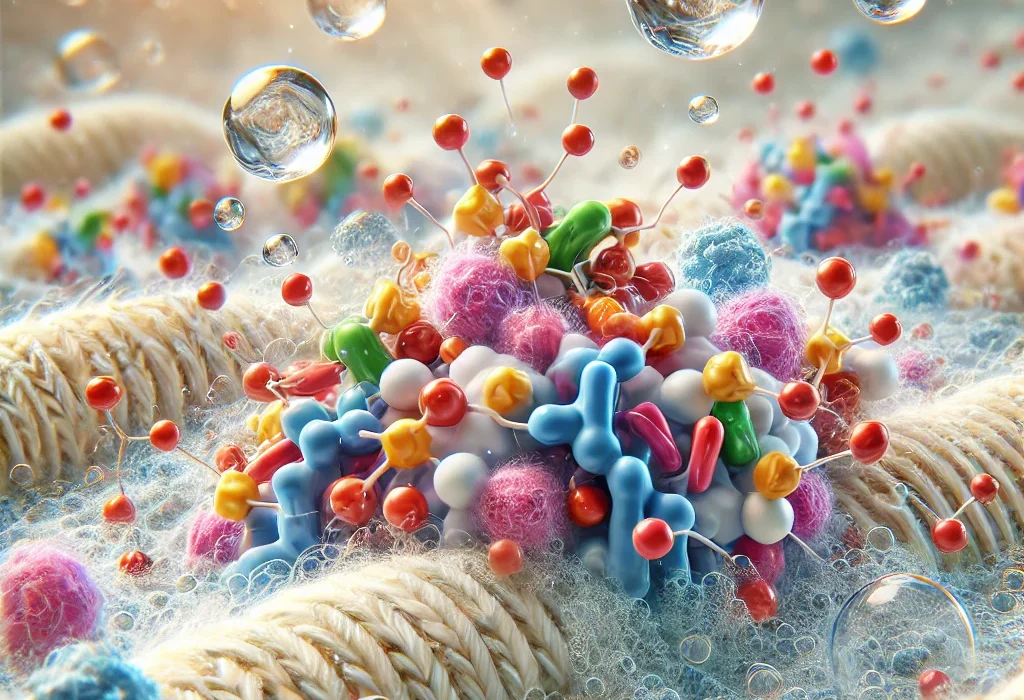Wilton Bioscience offers specialized enzymes tailored for the detergent industry, significantly enhancing the cleaning power and efficiency of detergents. These enzymes are biological molecules that act as advanced catalysts, driving essential chemical reactions to break down tough stains and dirt. In the detergent sector, enzymes improve stain removal by targeting specific molecules found in stains, such as proteins, starches, fats, and cellulose. This targeted action allows for more effective cleaning at lower temperatures, reducing energy consumption and preserving fabric quality. Commonly used enzymes in detergents include proteases, which break down protein-based stains like blood and egg; amylases, which target starches; lipases, which break down fats and oils; and cellulases, which help remove cellulose-based stains and maintain fabric appearance. By incorporating these enzymes, Wilton Bioscience’s detergent solutions offer superior cleaning performance, energy savings, and gentler fabric care, ensuring that clothes are not only cleaner but also last longer.
Detergent Enzyme Types
- DW-Cel
- DW-Ext
- Floor Cleaner
- DW-Lip
- DW-Super
- Fabri Clean
- DW-Pro
Frequently Asked Questions
Detergent enzymes are specialized proteins used in laundry and dishwashing detergents to break down specific stains and residues. These enzymes are derived from natural sources such as microorganisms, and they are designed to enhance the cleaning power of detergents by targeting and breaking down proteins, fats, and carbohydrates present in stains. Detergent enzymes play a crucial role in improving the efficiency and effectiveness of cleaning products, helping to remove stubborn stains and residues from fabrics and surfaces.
Detergents typically contain several types of enzymes, each targeting different types of stains:
- Proteases: Break down protein-based stains such as blood, grass, and egg.
- Lipases: Target fat and oil-based stains, like those from cooking oils or greasy foods.
- Amylases: Degrade carbohydrate-based stains, such as those from starchy foods like pasta or rice.
- Cellulases: Help to maintain the cleanliness and brightness of fabrics by breaking down cellulose, which can help remove dirt and prevent the graying of clothes.
In general, detergent enzymes are safe when used as directed. They are formulated to be effective at the concentrations used in cleaning products. However, excessive exposure to detergent products containing these enzymes, especially in concentrated forms, may cause skin irritation or allergic reactions in some individuals. It’s important to follow usage instructions and handle products with care.
In detergent processing, enzymes act as catalysts to speed up the breakdown of specific stains and residues. They work by targeting and breaking down proteins, fats, and carbohydrates found in stains. This enzymatic action improves the overall cleaning performance of detergents, allowing them to remove tough stains more effectively and at lower temperatures. Enzymes help in reducing the need for harsh chemicals, making the cleaning process more environmentally friendly and efficient.
